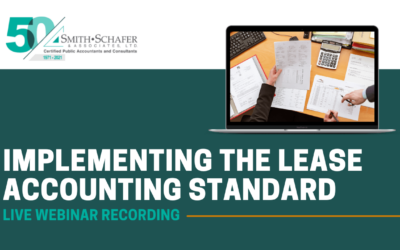Nonprofit organizations will need to include a breakdown of expenses by their natural expense classification and their function for years beginning after December 15, 2017. Nonprofits need to be aware of how they are spending funds and how they allocate costs between the functions under generally accepted accounting principles. Below are tips for nonprofits creating or assessing a statement of functional expenses.
- General and administrative (G&A) costs are not bad. In fact they are necessary, of course, like most things, they are better in moderation. When an expense does not fall into the program or fundraising bucket it is, by default, a G&A expense. A nonprofit should not hide from the need for funds to operate the organization. Having support staff (HR, accounting, administrative assistants) shows signs of a strong and growing organization.
- Fundraising costs are not bad. If an organization has contributions, they should have fundraising expenses. There are opportunities to allocate a portion of these costs to program or G&A expense, however, a series of tests and conditions need to be met.
- Create a plan to allocate costs. Ideally invoices coming into an organization would be for a specific function. In reality, many expenses need to be allocated, including rent, depreciation, salaries, and office supplies. Nonprofits need a plan to allocate these costs, for example, by a time study or square footage analysis. Ultimately, the allocation method needs to be reasonable for each item being allocated.
- Review and alter the plan to allocate costs. A pillar in accounting is to be consistent, but in a changing work environment, an individual’s time allocation this year may be drastically different than the prior year. As a result, the salary allocation should be reflected differently.
- Executive Directors are not allocated based on the staff reporting to them. Any personal in a managerial role needs to have direct conduct or supervision of a program in order for it to be allocated to program expense. Oversight of personal in charge of the program does not reach the threshold to be included in program expenses.
- Categorizing all program expenses together may not be the best approach. Nonprofits are required to report program expenses by major programs, however, organizations define what qualifies as a major program. These sub-categories of programs may change from year to year, just as they have on the 990 in the past. The same is true for support services (G&A and fundraising). They can be broken down into sub-categories if the nonprofit feels it conveys the information.
A statement of functional expenses that accurately depicts a nonprofit and complies with generally accepted accounting principles, will take time and effort, but will add valuable perceptive on the financial statements.
Smith Schafer has helped local nonprofits throughout Minnesota grow and thrive in their communities for the past 45 years. To learn more about how we can help, please contact a Smith Schafer professional. Click here to contact us. We look forward to speaking with you soon.



